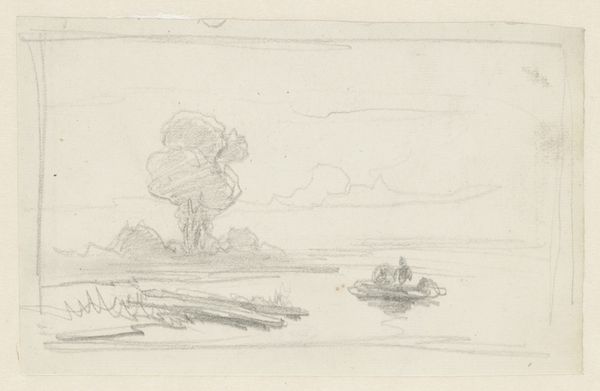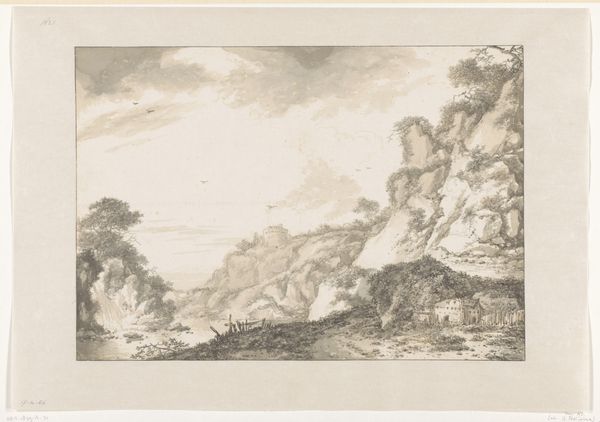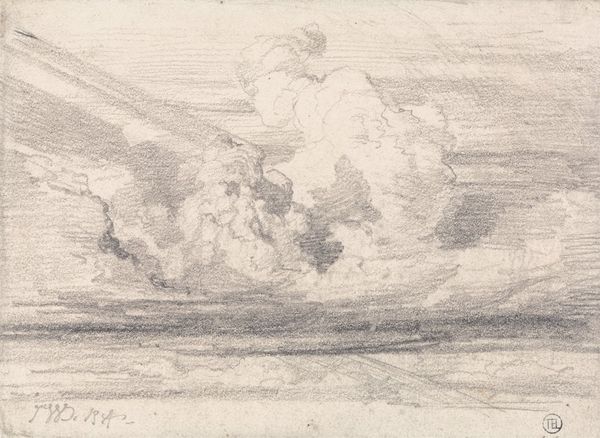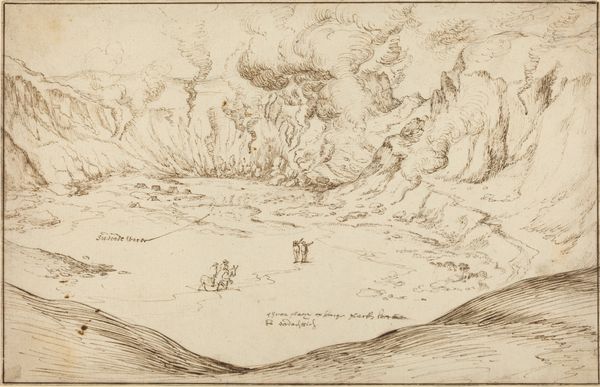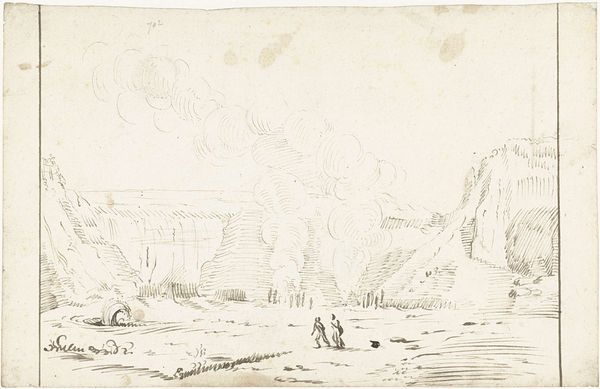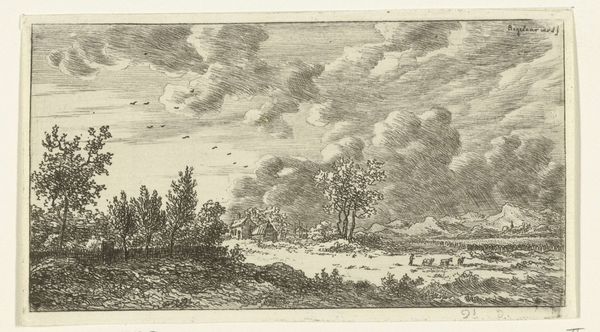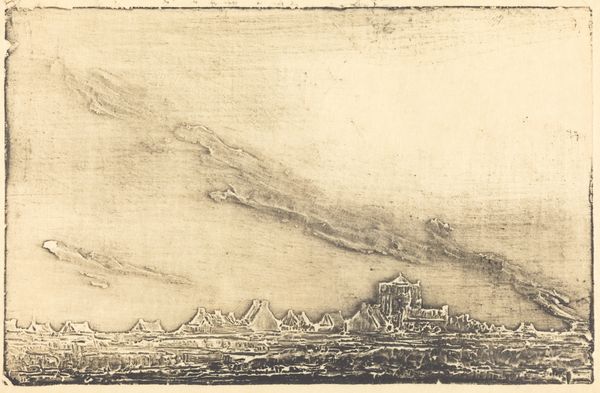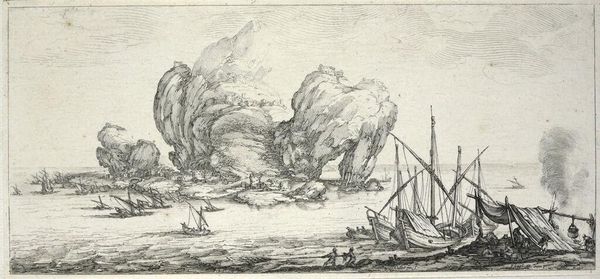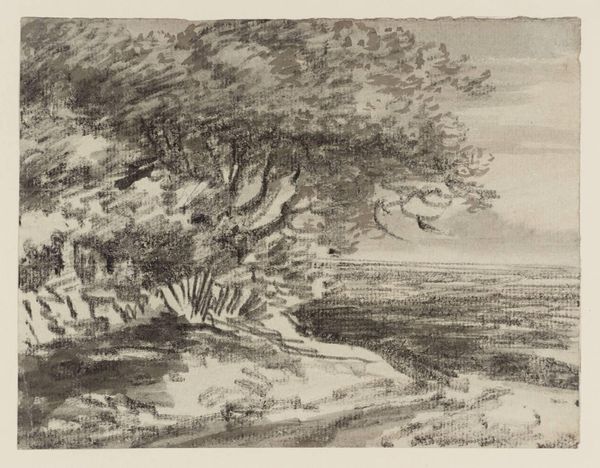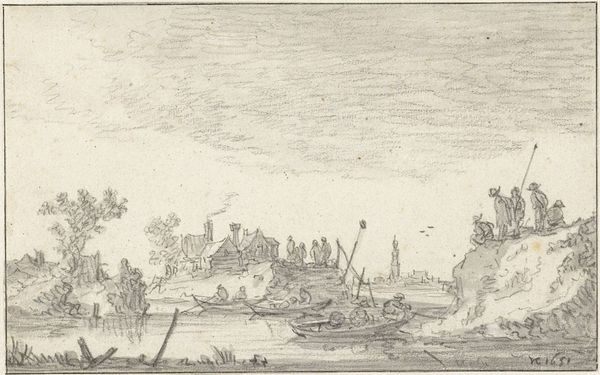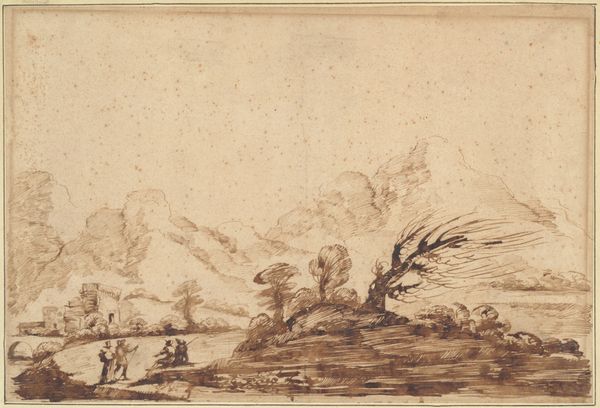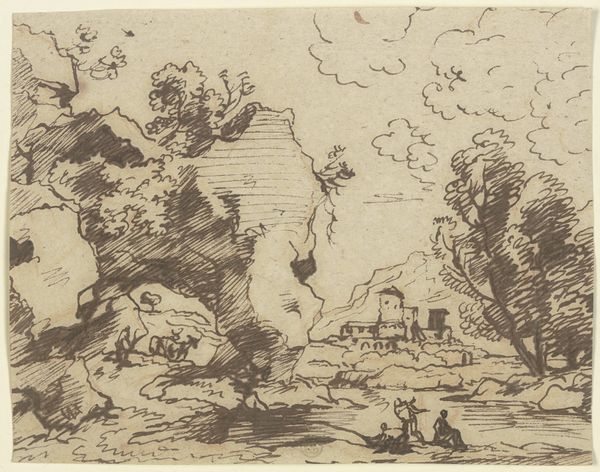
drawing, etching, ink
#
drawing
#
ink drawing
#
baroque
#
pen sketch
#
etching
#
landscape
#
etching
#
ink
#
line
#
italian-renaissance
Dimensions: height 157 mm, width 198 mm
Copyright: Rijks Museum: Open Domain
Curator: This striking landscape is titled "Gezicht op de Solfatara bij Pozzuoli, buiten Napels," a work made around 1611 by Gerard ter Borch I, rendered in ink. It's currently held at the Rijksmuseum. Editor: Immediately, it evokes a sense of awe and impending doom. The billowing smoke almost seems alive, a dominating force in contrast to the tiny figures below. Curator: Indeed, and considering the period, this depiction carries considerable weight. Travel, especially to places like Solfatara, an active volcano near Naples, was tied to status and education. This image becomes a statement about the artist’s knowledge and potentially his patrons’. Editor: So, viewing the landscape wasn’t simply aesthetic, but also performative. Who got to experience and then document such potentially dangerous landscapes? I wonder about the ecological impact that artistic pilgrimages, like this, might have initiated. Curator: That's a relevant point. Moreover, the meticulous detail in the rendering suggests a conscious effort to not just represent but also understand. The smoke isn't just "smoke;" it has texture, weight. Ter Borch I isn't simply recording a scene; he's dissecting it, allowing him—and us—to explore nature's power from a safe distance. Editor: The contrast is interesting; there's almost a colonial lens inherent. By presenting it so linearly, even clinically, is the artist indirectly distancing himself, establishing dominance? The volcano is observed, catalogued – made art rather than disaster. The figures look on, safely viewing the violence of nature from stable ground, emphasizing control. Curator: An interesting tension exists in the work, absolutely. Consider the formal qualities; the lines, while descriptive, also lend the piece a quality almost scientific in its precise details. Editor: Thinking about our roles, perhaps art then served both to document expansion and discovery but also somewhat sanitized, normalizing an anthropocentric world view that had, and continues to have, ecological costs. Curator: A compelling consideration, especially within our contemporary framework. It's easy to appreciate the artistry but critical to acknowledge its place within socio-political structures. Editor: Absolutely. This piece has definitely revealed further dimensions when viewed from this critical, intersectional lens.
Comments
No comments
Be the first to comment and join the conversation on the ultimate creative platform.

